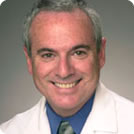
Building a side business that utilizes your domain expertise and scales.
Print MD.net is a side business that I've built to address a very specific need for medical spas and cosmetic practices: how to handle direct mail and marketing with professional design that doesn't break the bank.
Print MD.net is designed to do just that. It's a site where a plastic surgeon or cosmetic practice can get everything they need, from postcards, business cards, appointment cards and posters, all professionaly created and integrated into 'campaigns'.
View the current campaigns
The emphasis on a virtical niche that I have a lot of domain expertise in means that we can offer business cards, posters, referral and appointment cards that all match, ensure the highest quality design and printing, and give a price break. Nice.
Oh, and you can enter your own copy, address and even upload your logo to customize your marketing materials just the way you want. Click here for a demo.
The business end of this is a focus on using technology that scales. A cosmetic practice can now access custom design and professional copywriting for 20% of what it would cost them to produce it and they have the additional benefit of small, on-demand orders. So what if another clinic in another state has the same postcard...
This business model is possible because a typical design agency or print shop has to offer everything, has some hefty overhead costs and is constrained by geography, an online product isn't limited by those constraints. Better yet, there's no additional cost for additional sales.
Of course, developing this kind of side business does come with some risk. All of the effort and much of the cost is invested on the front end so if you build something that no one wants, you're SOL.
In this case, I've combined my own domain expertise in cosmetic medicine with my resources around design, copywriting, and marketing. Since I own a cosmetic medical community (Medical Spa MD), an advertising agency (Wild Blue) and some familiarity with markeing and sales, I'm pretty comfortable that this business will be part of a collective win.
With PrintMD.net, I've designed the operations so that I am able to direct the business without working 'in' the business. All of the fulfillment, customer service, payment transactions and the rest are completely outsourced and it won't matter if the business takes a while to begin to turn a profit.
Since I'll be learing just a much from what doesn't sell as what does, I'll be able to quickly itterate and change direction. If there's a new product that I think may do well, I'll have a platfrom that I can test it with and make a determination to keep, dump or modify it quickly. Since I've developed this business on the side, it's effect is cumulative and I have enough control that I can tweak it constantly.
Of course this isn't the first business that I've started and it certainly won't be the last. The cumulative effect is that I've developed a process that allows me to create value that doesn't require a constant exchange of time for money. Instead, I invest at the beginning. It's only by detemining how the market is reacting to our business that you can make informed decisions. When you start a business of any kind, you'll hear lots of praise about what a great idea it is. It's only when people part with cash for your product or services that you'll know you're on to something.
Businesses always come with costs, even if it's only opportunity cost. So, if you're going to fail, fail fast.
If you're a physician that's looking to build revenue and income from businesses, services and products outside of your clinical practice, we'll be here to help.
 These days, social (and professional) networks extend beyond a single web site.
These days, social (and professional) networks extend beyond a single web site.




 Post a Comment
Post a Comment







